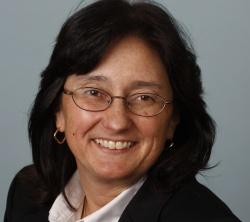 Nancy Harhut is the chief creative officer of Wilde Agency, where she combines behavioral science with digital and direct marketing in order to get people to act. As part of SXSW Interactive, Harhut will explore how to incorporate decision-science principles into marketing practices as a means of achieving results.
Nancy Harhut is the chief creative officer of Wilde Agency, where she combines behavioral science with digital and direct marketing in order to get people to act. As part of SXSW Interactive, Harhut will explore how to incorporate decision-science principles into marketing practices as a means of achieving results.
Q. How did you come up with the idea for this panel?
A. The intersection of social science and marketing best practices is something I find really intriguing. Marketers try to get people to take an action: click, call, share, try, buy, etc. And social scientists have discovered so much about how people make decisions. Using what they’ve proven – much of which is not what you’d expect – can really help marketers get the behavior they’re looking for.
Q. Why is it important for companies to consider psychology-based marketing?
A. Social scientists have found that humans, over the millennia, have developed decision-making shortcuts – certain automatic, instinctive, reflexive behaviors. If we as marketers know that, we should use it to increase the likelihood of getting the customer and prospect behavior we want. It becomes one more way we can prompt and persuade.
Q. Without revealing too much, what are some of the decision-science secrets?
A. There are dozens and dozens of secrets that a marketer can apply. If you’re trying to acquire customers, the Consistency Principle or Loss Aversion could work really well. The first because once a person makes even a small commitment, they feel compelled to remain consistent with that behavior. And Loss Aversion because people are twice as motivated to avoid pain, as they are to achieve pleasure.
Q. What are some ways marketers can prompt these automatic behaviors?
A. If you wanted to use the Consistency Principle in interactive marketing, you could email someone a free trial offer, or get them to like your FB page, or even have them submit a video showing themselves using your product for a chance to win a prize. These are all relatively small, low-risk behaviors. However, once someone takes this first step, they’ll be that much more likely to say “yes” when you ask them for a larger commitment (ex: purchase your product). There’s some really interesting research about this that I’ll share at my session.
You can effectively wield Loss Aversion if you point out what someone will miss out on if they don’t do what you ask them to, as opposed to focusing on what they’ll enjoy if they do. So often, we focus only on product or service benefits and avoid any mention of the negative. But marketers can tap into real power there if used properly.
Q. Which elements of marketing have the greatest impact on consumer decisions?
A. We, as marketers, know that people are motivated by many different things: their needs, solving their pain points, context, price, offers, self-interest. But only recently have we begun to factor in the impact of decision-making shortcuts – the “autopilot” effect. Social scientists have found that up to 95% of purchase decisions involve these heuristics. I would argue that this is a significant consideration for marketers. At Wilde Agency, we refer to it as “The Human Behavior Advantage” because of the huge, positive impact it can have on engagement and response.
Q. What do you think the biggest takeaway will be for an audience member of this panel? What specific things are you hoping people learn?
A. Often people are amazed by how many decision making shortcuts come into play everyday – and how deceptively simple things can have a considerable influence on behavior. I hope attendees discover the real value of incorporating decision-science findings into their interactive marketing. They’ll see it will make them more effective communicators and more successful marketers.
During her presentation, Nancy Harhut will show examples of interactive elements (Web pages, email, social media, etc.) to illustrate these decision-making shortcuts. Some revolve around how to position prices. She also plans to share copywriting techniques – like “eye magnet words” – that compel readership, as well as design considerations that are proven to affect the brain in ways that increase comprehension and credibility.
Session Details
Tuesday, March 17
11 a.m. -12 p.m.
Hyatt Regency Austin
Zilker Ballroom 3
208 Barton Springs Rd.
For more information on Nancy Harhut’s session, visit http://schedule.sxsw.com/2015/events/event_IAP35511.
